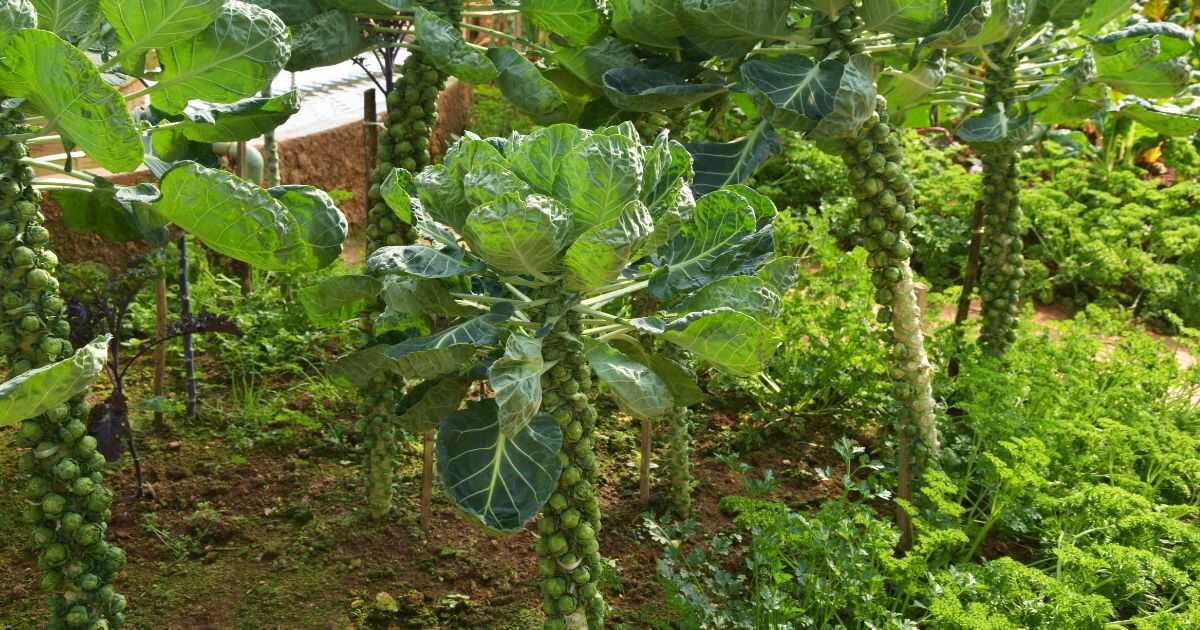
Brussels sprouts strike fear in the hearts of many home gardeners. The flavor and texture of these cabbage-like plants doesn’t appeal to everyone, but with a few simple tricks, you can grow your own and make them your family’s favorite vegetable.
In fact, there are lots of challenges that can make growing Brussels sprouts even more rewarding. Brussels sprouts thrive in cool weather, so planting them early gives you ample time for harvest before winter strikes.
The compact size of this plant also makes it ideal for small gardens or containers with limited space. There is no secret to growing Brussels sprouts that has not already been shared with the world at large a thousand times over.
Even so, most people aren’t interested in reading about how to grow Cruciferous vegetables from seedling until after the first frost. Here are three tips on how to grow Brussels sprouts that will change your life and have you eating them every night this winter.
How to Plan Your Brussels Sprout Garden Carefully

Growing Brussels sprouts is easy. Growing them well is another story. Brussels sprouts are finicky plants that require a specific environment to thrive. They will not grow well in every soil type and they thrive best when planted as early in the season as possible. If you want to grow your own sprouts, you’ll need to choose a location that has full sun (at least 6 hours per day) and has rich, sandy soil that drains well.
You’ll also want to make sure that your garden area has plenty of space — Brussels sprouts grow best when allowed to sprawl out in all directions, like a little patch of miniature cabbage. Brussels sprouts are heavy feeders, so make sure you add plenty of compost to your garden bed before planting. You will also want to think about what you will plant around your sprouts to give them the best chance at thriving.
Brussels sprouts need help to fight off pests and diseases, so it’s important to plant these along with other plants that will attract pollinators and beneficial insects. Other plantings should be chosen based on what they will do for your sprouts - radishes, carrots, and beets are good choices.
Choose The Right Variety
There are lots of varieties to choose from, but not all of them are created equal. Brussels sprouts thrive in cool weather, so look for varieties like Brunswick, Waltham, or Sterling. These cultivars are bred specifically to mature quickly and produce lots of sprouts before frost hits.Brussels sprouts are also a finicky plant that requires a very specific amount of nutrients at a very specific time. If conditions aren’t right when they sprout, they will often die. Varieties like Express or Premiere should be planted in your garden in early spring.
These cultivars are bred for their ability to mature quickly and be harvested before the fall frosts arrive. If you live in an area that gets a lot of warm weather, consider planting an early maturing variety like Marathon. This plant will produce lots of sprouts, but will also mature quickly.
Grow Your Own Sprouts From Seed
Brussels sprouts can be grown from seed, but not all varieties do well when started this way. Before planting your seeds, make sure that you select varieties that have been bred specifically for sprouting. Brussels sprouts will not thrive if they are allowed to grow too big. Sprouting seeds provide the best opportunity to control the size of the plant from the very beginning.If you want to grow sprouts from seed, don’t rush to the garden center. Instead, purchase seedlings from your local garden store. Brussels sprouts seedlings are notoriously finicky, and will often die if you try to transplant them from the store to your garden. If you do want to start your own seeds instead, you need to start them indoors from about 3-4 weeks before the last expected frost in your area. Once your sprouts have germinated and started to sprout leaves, you will want to transplant them to your garden bed.
Harvest And Enjoy!
Once your Brussels sprouts are ready for harvest, don’t go overboard. Harvesting too often will cause the plant to stop producing entirely. When harvesting your sprouts, cut the plant at the base of the stalk. You don’t need to pull the plant out of the ground — there will be plenty of time for that once the frost comes.Brussels sprouts are best enjoyed fresh, but you can store them in a root cellar just like other root vegetables. Brussels sprouts are a nutritious, delicious, and versatile vegetable that everyone should try growing at least once in their life. These plants will thrive in almost every climate, and can be grown in a small space or in a large garden. Growing Brussels sprouts is a rewarding experience, and is sure to become a tradition in your home. Good luck. - Garden Lot
Tags:
Garden
